This article is part of Goonhammer Historicals coverage of Turnip 28. You can find our other articles exploring this weird and wonderful game here:
Why you Should be playing Turnip 28
Cults Part 1: Tadpoles and Toadlets
Interview with Max Fitzgerald
Howdy and welcome back to a slightly belated second half to our coverage of Turnip 28s various cults. Turnip 28 has some of the most unique factions in any wargame, with a lot of serious gameplay shakeups and a system of organizing cults by difficulty/effort required to play that I would direly like to see other games adopt. Today we are covering the Toad level cults, which are “The most involved cults” according to the book. This doesn’t necessarily mean they are the most complex (I would give that title to the Gardeners), but just that they require the most out of you in terms of unique units or weird playstyles. One of these in particular is also a fantastic example of how the game frequently changes for the better, so, lets get into it. I’ll be doing the cults from both the Core Rulebook and from the Mercenary Cults PDF, same as last time.
Cults and Weirdos, Toad Style
Aunts’ Ascendant
The Aunts are one of my go-to examples for how amusing and interesting the factions are in Turnip. They are mostly in the Toad tier because they require a totally unique model that you cannot use in any other cult, as they are not particularly difficult to understand. The Aunts are two middle aged women in a hot air balloon, carrying a shotgun and a bucket full of bricks to hurl at your enemy. The Aunts are slightly confusingly a follower unit, not a Toff. Most of these special character type cults replace your Toff instead of a follower, so it is slightly odd that this one works differently. The faction’s one and only significant special rule is that the Aunts spend the battle writing a travel guide/review of the battlefield, and for reasons this allows you to control where all units retreat to. Normally in Turnip 28, when you lose a combat you retreat directly away from whatever won the combat with you.
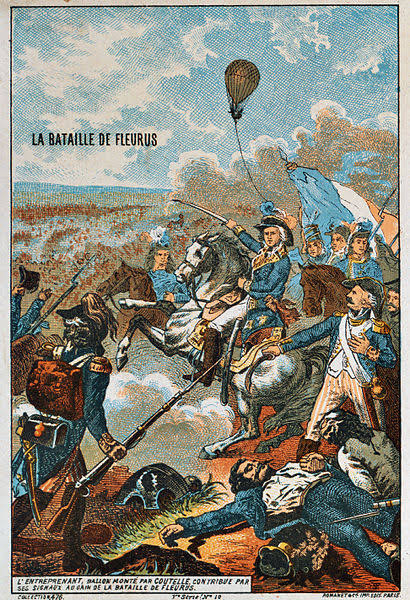
The Aunts let you fuck with this. Your own units can be pulled into cover to protect them after getting shot, or you can use this with melee units to retreat towards the enemy, letting you basically cheat some free movement and get easier charges. Meanwhile, if you are the one winning the combats, it lets you force enemies to retreat through their own units, inflicting extra casualties, or lets you pull them out into the open to get blasted by cannons, or lets you pull them closer to a nice, big unit of Bastards just waiting on a chance to charge. This is a deceptively powerful ability, and gives you much, much more control over what happens on the table than you would expect. I really need to get around to building a hot air balloon for this cult, I love it.
Leech Lovers
I am going to start out by saying that the Leech Lovers were overhauled in the most recent version of the rules, and thank god for that. Their previous version was incredibly obnoxious, overpowered, and unfun to play against. They are still a fairly complex and weird cult, but much, much less than they used to be. The Leech Lovers get to bring twice as many Toadies to every game. They do not get more followers though, just more officers. So in a standard 3 Snob game, you will have your Toff and 4 Toadies. In addition, they replace their Toff with the Leech Lovers, who have a lot of wounds, 6 to be precise, and regenerate a wound every time you inflict an unsaved wound on the enemy. The Leech Lovers can also choose to take 4 wounds to issue an order to a nearby unit, even if that unit has already been activated this turn. This has potential to be really, really annoying if combined with a unit with non-black powder ranged weapons, as that would give you a double-shoot and any unit with black powder weapons could only fire back the first time. Their Toadies also get extra wounds and attacks, making them beefier and scarier, though you still probably don’t want to get them into combat if you can avoid it.
Believe it or not, what we have just covered is less than half of the Leech Lovers kit. The first of their abilities is that every time you order a unit, both players MUST choose one of their units to take a wound which cannot be saved. This is why you have so many extra officers and so many extra wounds in your army. This will bleed your opponent out at a pretty rapid pace, and it means that in a standard 3 snob game with 4 units of followers, the Leech Lovers themselves will be healing 4 wounds a turn just from activating your units. That is a free usage of their double turn ability every turn, and bear in mind that that will count as an activation, which will heal another wound.
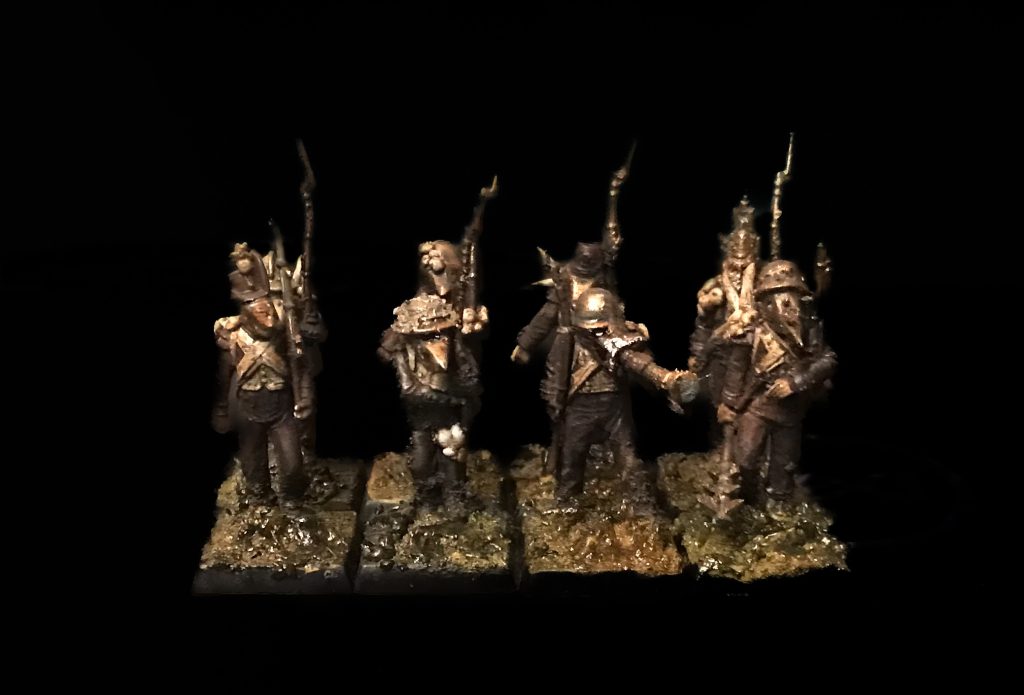
On top of all of that, every time a unit of yours finishes a round of melee combat, they heal wounds equal to the amount of unsaved wounds they inflict on the enemy. This can reanimate dead models. This provides some heavy incentive to go melee heavy. I would probably aim to run a single unit of ranged weapon fodder or brutes, and 3 units of Bastards to make the best use of this healing and reanimation.
I am not going to lie, the Leech Lovers are overloaded. They have so many strong traits and any one of these would be an entire tadpole/toadlet cult. They don’t have the strongest melee offense in the game, that probably goes to Pikemen’s Lament or Procession of Woe. The issue is with their sustain. You can both charge each other, both do 6 wounds, but then the Leech Lovers regenerate 6 models and completely cancel your damage. Add onto that the fact that every single Leech Lovers unit has it’s own designated Toadie, and that they get an extra activation each turn for basically free, and that every one of those activations bleeds the enemy out while inflicting some minor and easily healed damage on the Leech Lovers, and you have a frighteningly powerful cult. That said, there are some exploitable weaknesses. Leech Lovers don’t like getting shot, because they can’t get any healing from ranged attacks, and will have a pretty small amount of ranged firepower. Your best bet in a game against them is to run away and never let them reach combat with you, shooting them and trying to kill them before they reach you and turn on their Aatrox grade mega-healing, and I generally dislike any faction in a wargame where the counterplay is “sit in your deployment zone and never let them touch you”. I still would consider them to be overpowered and unfun to play against, but trust me when I say that this is infinitely more fair and fun than the previous version of Leech Lovers.
Uprising of the Louse
The Uprising of the Louse is a people’s revolt, aimed at Guillotining/burning in a wicker man the corrupt and decadent Snobs of your enemy’s army. You start with a quote “Suitable place of execution”, so a model of a guillotine or whatever method tickles your fancy, called the Tall Man. The Tall Man has a rule called the Tall Man’s Gaze, which basically forces your opponent to roll extra dice every time they need to see if they blunder an order, and they blunder if they get a 1 on any of those dice. In addition, you can take a special follower type called “Rabble”, and every time your enemy blunders an order, you spawn a free unit of Rabble, up to a cap of 4 at any one time. The best part is that the amount of dice that the Tall Man’s Gaze forces them to roll is equal to the amount of Rabble that you have on the table, so there tends to be a bit of a snowballing effect where the enemy blunders so you get more Rabble so the enemy blunders even more and you get even more Rabble. Rabble have terrible base stats, but have an Attack value equal to 2 plus the amount of Rabble on the table, so while they are missing a lot, a unit of 4 of them can potentially put out 24 attacks assuming you have the maximum amount of Rabble on the table. And hey, they are free. I like the Uprising quite a bit, it feels appropriate to have an aristocrat guillotining cult in a Napoleonic style game.
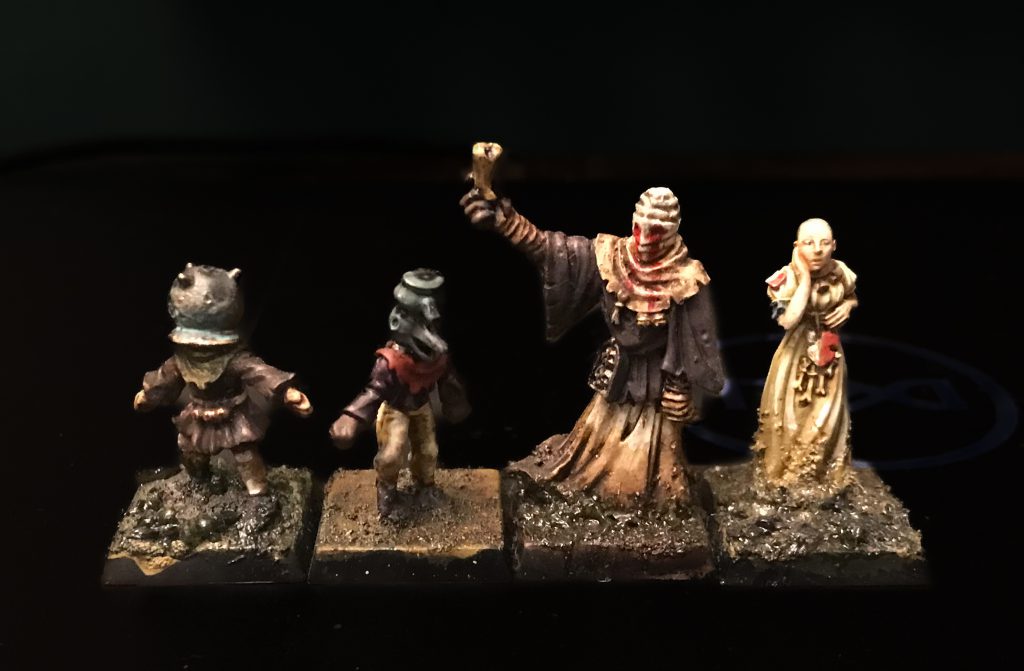
Saint Alamei’s Rocket Battery
Saint Alamei’s Rocket Battery is a cult that is only in the Toad tier because it requires you to build multiple new models. You can replace up to 2 of your followers with Rocket Artillery, which is rad. The Rocket Artillery is very similar to a standard Stump Gun, but with a bit more of a horde-clearing focus and the ability to spread panic around the enemy army, with the nearest enemy unit to the one you hit taking 2 panic tokens. This will rapidly lead to most of the enemy army being drowned in panic tokens. Adding on to that general theme of panic tokens, whenever one of your units is completely destroyed, they give 2 panic tokens to the nearest enemy unit. You can also blow up a single model in any of your units to remove two panic tokens from them. This is all pretty cool, and is an interesting alternative for an artillery focused cult. I personally like the Grand Bombard a bit more, purely because I think the spotting mechanic is more fun, but if you like inflicting a ton of panic tokens, this is a fun cult.
The Temple of Swellings
Hey have you ever wanted to play as the terrain? The Temple of Swellings is basically a normal, generic army, but at any time you can explode a model into a 100mm base plant terrain piece that will then start aggressively spreading and taking over the board. You place “Tendrils” every turn, which are represented by a 25x100mm base with suitable plant life on it. These tendrils have to be placed touching either the Swelling itself, or one of the other tendrils, so you actually have to spread the plant out from where it starts. They also have access to Rootlings, and I love Rootlings. Rootlings are kinda junky melee followers, but they can infinitely respawn inside of dangerous terrain around the map. They can also spawn within 3 inches of the Swelling, so you are basically making a patch of intensely dangerous vegetables and that absolutely rules. They also force everyone to fail dangerous terrain tests on a 1 or 2, and, if they place a tendril within 3 inches of an enemy unit, that enemy is forced to make a dangerous terrain test, up to 2 times per turn. I have no idea if this is good or not, but playing as an ever spreading plant growth and it’s Rootling minions is rad as hell and I want to build it.
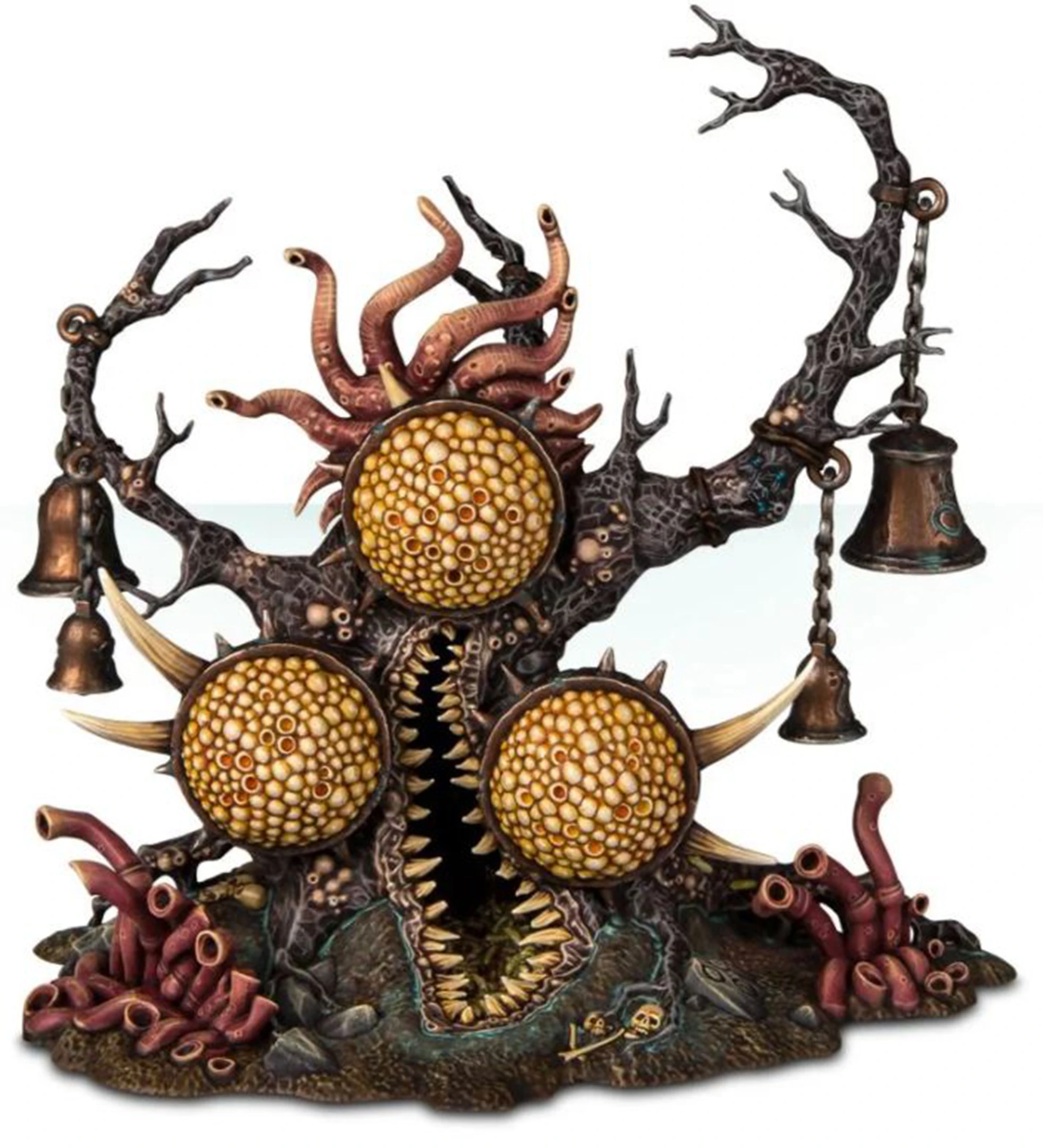
Wandering Morris’ Pubcrawlers
So, Wandering Morris is pretty similar to the Brotherhood of Greed in a lot of ways. To start off with, you replace your Toff with Wandering Morris, who is nearly unkillable. This is because the enemy is not allowed to target him with attacks for any reason. He can still die to terrain and some other things, but not by deliberate action by your enemy. In addition, after ordering a unit, they pick another friendly unit on the board and move them 6 inches, so they can really get around the table. You also pick 5 out of a set of 10 “Pets”. You place each Pet on an objective, and whenever you take control of an objective with a Pet on it, you take that pet and assign it to a unit on the table. Most are buffs and are intended to go on your units. I am going to go over each of them here, because their names are funny and I want to talk about them.
Bacillus
Bacillus is a floating pork pie, which I have been told is a dish that they eat in the far away and forbidden land of Ing-Land. It grants a unit the ability to charge any unit they want, not just the closest one.
Musk
Musk is an ox, and grants a unit that cannot normally move the ability to move up to 12 inches.
Ergot
Ergot is a piece of dancing bread and adds 6 inches to a unit’s movement, and lets them make a free extra move after they perform an order.
Molar
Molar is the only pet you will realistically want to give to the enemy. He reduces the movement speed of any unit he is attached to by 6 inches. This is an important time to remind you that a unit with a movement of 0 in Turnip can still move, but is at the mercy of the dice.
The Drones
The Drones are a set of 3 bees that you pick up all at once off of an objective. Each of them can be assigned to a separate unit, or they can all be dumped on the same unit. Each bee gives +1 to the attacks characteristic of the unit. This is very, very powerful effect, and the modality of being able to either spread it to most of your army or dump it all on a unit that has an important job to do is really nice.
Hermitage
The Hermitage is a crab, and it allows you to choose to pick up a unit and put it in any piece of dangerous terrain when it retreats. You can either use this as an escape tool on your own units, or you can put it on an important enemy unit so you can jam them in some far off corner of the board. Love things that can be either a buff or a debuff like this.
Muttons
Muttons is a cloud of smoke shaped like a sheep, and gives a unit 2 extra attacks for every powder smoke token on the table. This is potentially really good, and could be used to, for example, supercharge a unit of bastards to charge in after you have finished firing with your whole army.
Lambton
Lambton is an Eel, and every time the unit he is attached to rolls an unmodified 6 in close combat, he instantly eats and kills a single model in the enemy unit. This is potentially hilarious if you are playing against one of the cults built around a single huge melee monster, like the Feast of Charybdis or the Great Proboscis, as it can indeed eat those entire monsters.
Porbeagle
Porbeagle is the entire reason I decided to list all of these, because I get to say the phrase “Porbeagle is a psychic beagle that detonates the heads of the enemy”. He gives a unit an extra shooting attack that inflicts 2 wounds with no save if it hits. This can be given to units that otherwise don’t have a ranged attack, which is fun.
Buckler
Buckler is a walking shield and lets a unit ignore a single hit each time they are targeted, in both melee and at range. This is potentially incredible value, assuming you ignore something important, like a cannonball.
I love this cult. The weird menagerie of pets lets you adapt your force to the enemy you are fighting, while also forcing you out of your deployment zone to fight over objectives to get those buffs. Once again, great design.
Alice and Mol
Occupying the valuable aesthetic space of a Bioshock Big Daddy and Little Sister, Alice and Mol is a scavenging army based around one very large ogre with a small woman riding/commanding it. Your units get extra shots for every special rule that they have, and are heavily encouraged to use ranged weapons over black powder weapons. This is because they all gain the Unstable Icon rule, which gives them the chance to explode when they shoot, which isn’t great. This is already fun, and lets ranged weapon Chaff, already a fairly good unit, nearly double their shots every turn. The best part is that, once per game, when Alice and Mol personally defeat an enemy unit in melee, they collect that unit’s special rules and give them to every unit in your army. This gives extra shooting attacks, and also can give some very, very powerful special rules to some units that really are not supposed to have them. I love this cult so much, the idea of stealing your opponents special rules and abilities is inspired in every game it shows up in and the execution here is really fun.
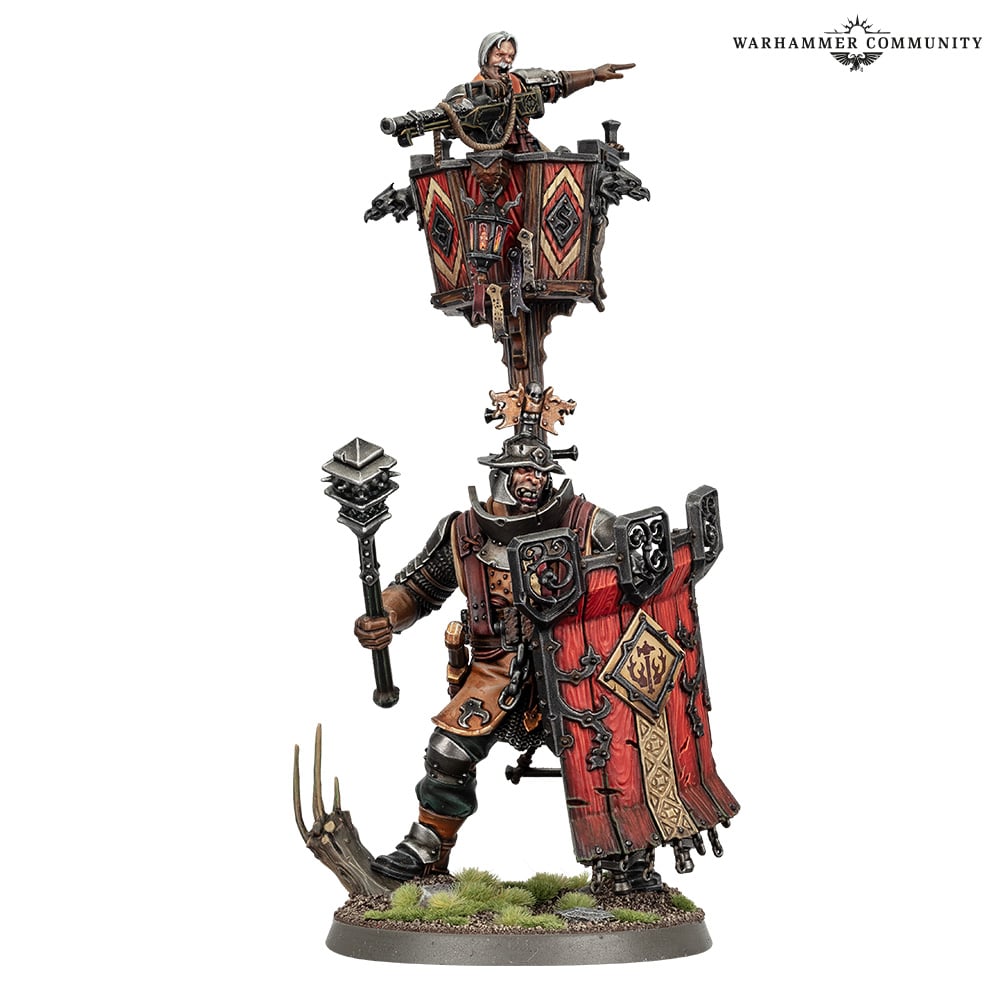
I originally had a tangent here about how worried I was about a Stump Gun in this army list, but there is a line of text that excludes the stump gun from their extra shots rule, which is really good. That said, you could absolutely use Alice and Mol to beat a Stump Gun to death, which will somehow instant-transmission the ability to fire cannonballs to every unit in your army, which is fucking hilarious, somewhat unlikely to happen, and worth trying to achieve. I am going to build a root ogre for this, I love them.
Another note is that the “How to play” and “FAQ” sections of this army seem to have been accidentally replaced with the ones for Lady Illiana’s Guttersnipes, at least in the version of the PDF that I read. Turnip changes frequently though, so this will likely be fixed in the next version.
Conclusion
God I love every Cult in this game. Say what you will about how strong some are, or how some just do more and give more modelling opportunities, absolutely none of these are boring. Even Stranglin’ Harrys and Slug’s Lament, two really, really basic cults, still have interesting and unique mechanics to them. Leech Lovers do still seem massively powerful to me, but as long as you and your opponents talk things over, you should be fine. There isn’t any sort of competitive scene for Turnip 28, at least not yet, so if you have an issue with something being overpowered, talk it out with your opponent. Communication is usually the best way forwards with these things.
In a lot of ways the Cults here remind me of something like Age of Empires, where every faction shares the same basic core units, but the way they are arranged and favored by the faction mechanics can make identical units feel very, very different. A Leech Lovers melee Fodder unit and a Procession of Woe melee Fodder unit will both feel different, the first being more for long fights and healing and the second being more for short fights and murdering the enemy outright on the charge.
I genuinely want to make a force for all of these cults, and it is very rare that a game makes me want to do that. You should all really, really give Turnip 28 a try. It sets up quick, it plays quick, and there are so many fun and unique Cults to try out. I am sure something in one of these two articles has jumped out at you as seeming like a fun hobby project or a cool gameplay idea. For the price of a box or two of historicals and some greenstuff, you can really go nuts and make half of the cults in this game in one go.
I would recommend starting out with 2 units each of Melee Fodder and Black Powder Fodder, and a single Stump Gun. The majority of Cults will use at least one of the three of those, and you can even share those units between cults to save on time making more and more Fodder. That is all I really have to say about the Cults in this game, so, have a good night and go trample some root boys.
Questions? Comments? Suggestions? Awesome Turnip models to show off? Contact@goonhammer.com, comment below or come join our Patreon to discuss all things Turnip in our Discord


